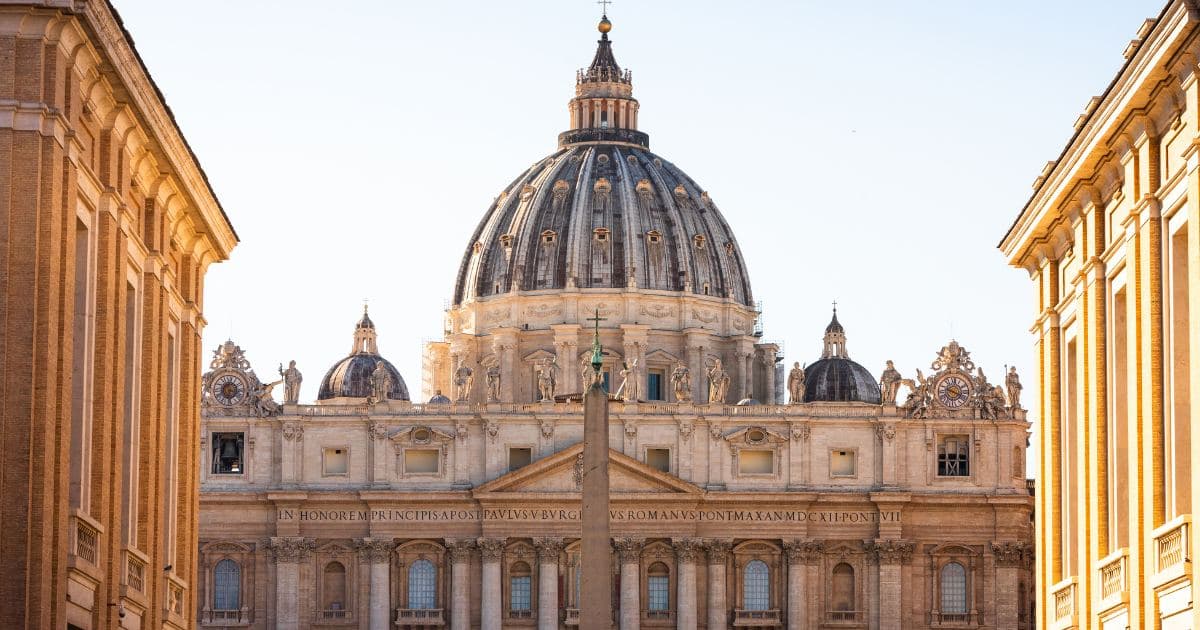10 Sturdy Facts About St. Peter's Basilica
St. Peter's Basilica, located in Vatican City, is one of the most renowned and visited religious sites in the world. As the centerpiece of the Catholic Church, it holds immense spiritual, historical, and architectural significance. To appreciate the basilica's grandeur, let's explore 10 sturdy facts about St. Peter's Basilica, shedding light on its history, construction, and remarkable features.
1. St. Peter's Basilica Was Built Over the Tomb of Saint Peter
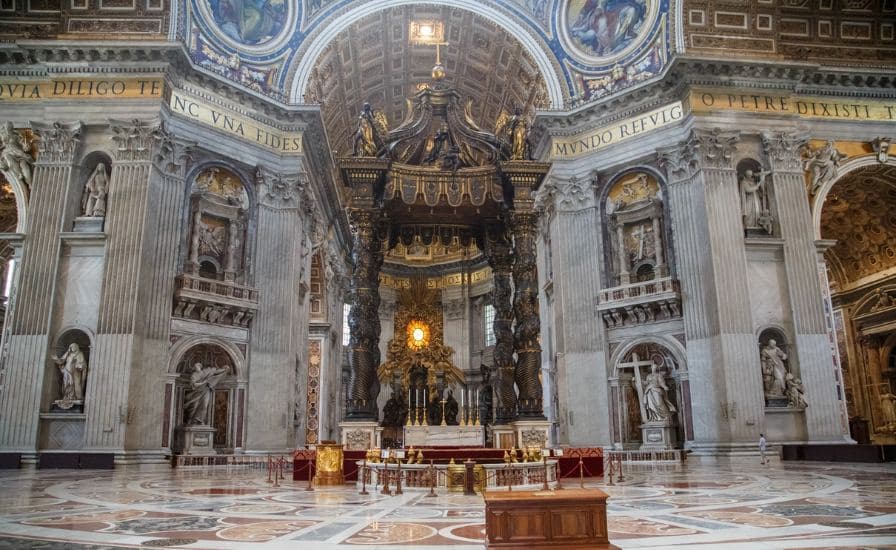
One of the most significant facts of St. Peter's Basilica is that it's built over the traditional burial site of Saint Peter, one of Jesus's apostles and the first Pope of the Catholic Church. According to tradition, Saint Peter was martyred and buried on Vatican Hill in the first century. The original basilica was constructed over his tomb by Emperor Constantine in the 4th century, with the current basilica completed in the 17th century.
2. It Took Over 100 Years to Build the Current Basilica
Construction of the current St. Peter's Basilica began in 1506 and was completed in 1626, spanning over 120 years. The lengthy construction period was due to the involvement of multiple architects, each bringing their own style and vision to the project. Notable architects included Donato Bramante, Michelangelo, and Gian Lorenzo Bernini. This prolonged construction resulted in a unique blend of Renaissance and Baroque architectural elements. Also, read our guide to know the opening hours of visiting St. Peter's Basilica.
3. St. Peter's Basilica Dome Was Designed by Michelangelo
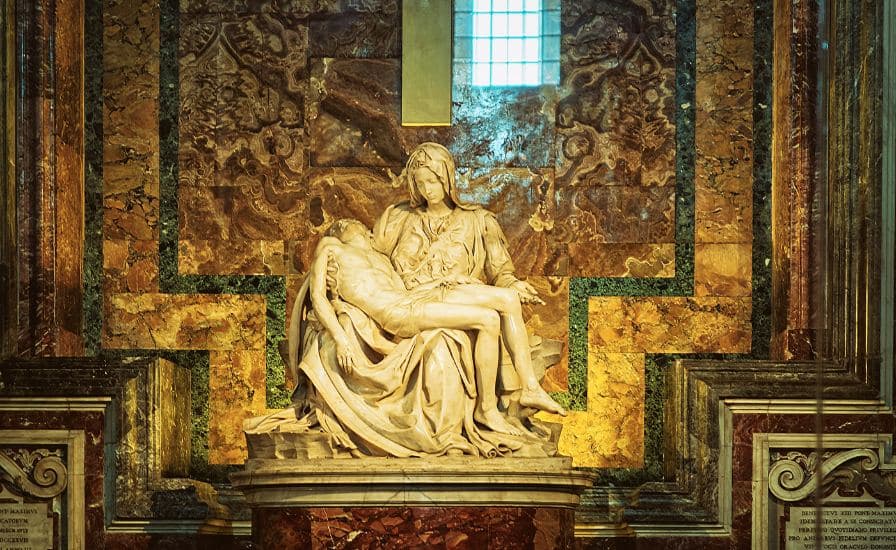
Michelangelo, the famous Renaissance artist, was responsible for designing the iconic dome of St. Peter's Basilica. The dome, inspired by the Pantheon and Brunelleschi's dome in Florence, is one of the largest in the world, measuring 137 meters (450 feet) high. Although Michelangelo designed the dome, he didn't live to see its completion. The construction was completed by Giacomo della Porta and Domenico Fontana, following Michelangelo's design.
4. St. Peter's Basilica Is the Largest Church in the World
Another noteworthy fact of St. Peter's Basilica is its sheer size. The basilica covers an area of 23,000 square meters (247,000 square feet), making it the largest church in the world. It can accommodate over 60,000 people, which is one reason why it's a central venue for significant religious ceremonies and papal audiences. Its vast interior includes multiple chapels, altars, and religious artworks. Read our guide to know more about getting tickets to enter St. Peter's Basilica.
5. St. Peter's Basilica Houses Famous Artworks
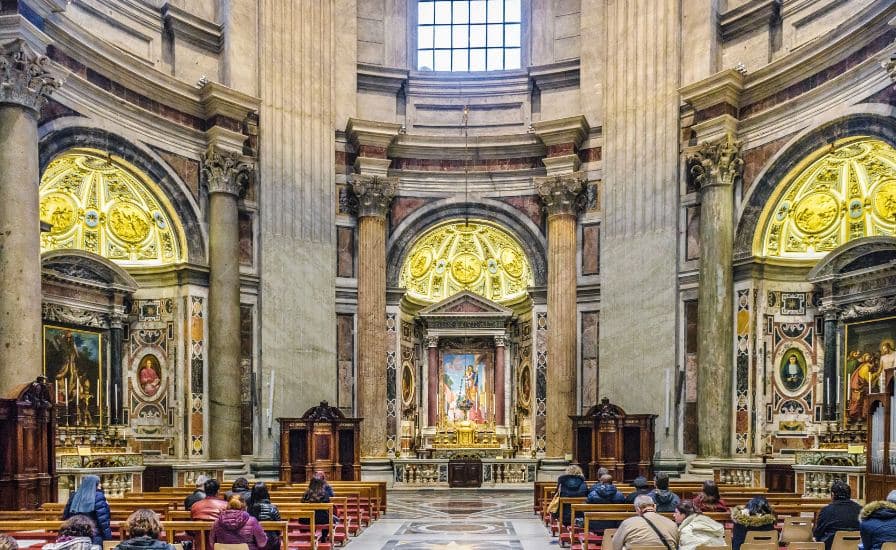
St. Peter's Basilica is home to numerous famous artworks created by renowned artists. Among the most notable is Michelangelo's "Pietà," a marble sculpture depicting the Virgin Mary holding the body of Jesus after his crucifixion. The basilica also features Bernini's Baldachin, a large bronze canopy over the main altar, and numerous other sculptures, frescoes, and mosaics that reflect the skill and artistry of the Renaissance and Baroque periods.
6. You Can Visit the Vatican Necropolis Beneath the Basilica
Beneath St. Peter's Basilica lies the Vatican Necropolis, a burial site containing tombs from ancient Roman times. Visitors can take a guided tour of the necropolis, which includes Saint Peter's traditional burial site. This unique experience provides insight into the early Christian history of Vatican City and allows visitors to explore the ancient foundations of the basilica.
7. St. Peter's Basilica Has a Dedicated Entrance for Tours
If you're planning a visit to St. Peter's Basilica, knowing how to access the site is essential. There is a dedicated entrance for St. Peter's Basilica tours, allowing visitors to bypass the general entry lines. By purchasing St. Peter Basilica tickets for a guided tour, you can save time and gain insights from knowledgeable guides. The tour typically includes a visit to the basilica's interior, the Vatican Grottoes, and, in some cases, the dome.
8. The Basilica's Central Altar Is Reserved for the Pope
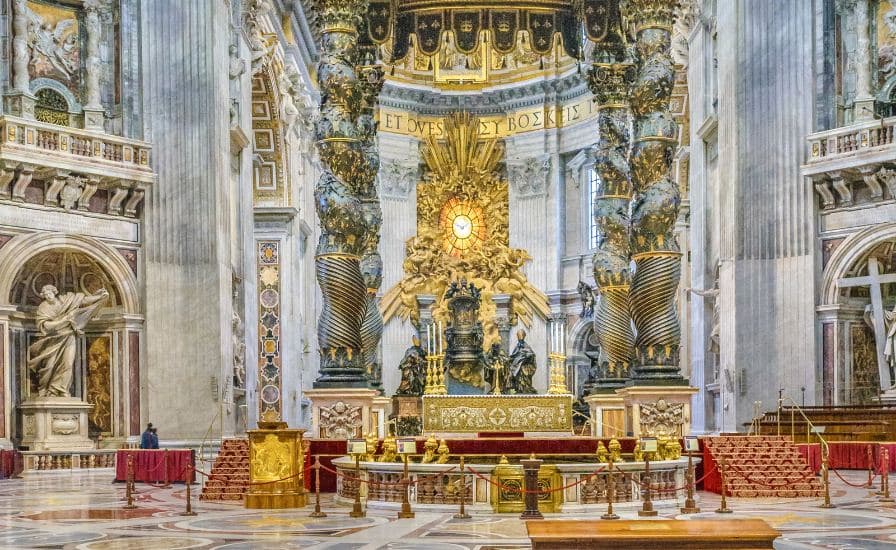
The central altar, also known as the Papal Altar, is located directly above the tomb of Saint Peter. It's reserved exclusively for the Pope and is where he leads major religious ceremonies, such as the Easter Vigil and Christmas Mass. This altar is covered by Bernini's Baldachin and is one of the basilica's most significant focal points.
9. St. Peter's Basilica Offers a Stunning View from Its Dome
A popular activity for visitors is climbing to the top of St. Peter's Basilica dome. By purchasing St. Peter Basilica tickets, you can access the dome and enjoy breathtaking views of Vatican City and Rome. The climb involves both an elevator ride and a steep staircase, but the panoramic view from the top is well worth the effort. Guided tours are available, providing additional information about the history and architecture of the dome.
10. St. Peter's Basilica Audio Guide Enhances the Visitor Experience
To make the most of your visit to St. Peter's Basilica, consider using a St. Peter's Basilica audio guide. These guides provide detailed information about the basilica's history, architecture, and significant artworks. Available in multiple languages, the audio guide offers insights into the various sections of the basilica and allows you to explore at your own pace. It's an excellent option for visitors who prefer a more flexible tour experience.
Let's delve deeper into various aspects that make St. Peter's Basilica unique, exploring its architecture, historical significance, and insider tips for visiting.
The Swiss Guard Protects St. Peter's Basilica
The Swiss Guard is responsible for the safety and security of the Pope and Vatican City, including St. Peter's Basilica. Established in 1506 by Pope Julius II, the Swiss Guard is one of the oldest military units in continuous operation. Recognizable by their colorful uniforms and traditional halberds, the Swiss Guard not only symbolizes the historical connection between Switzerland and the Vatican but also ensures the safety of visitors and the sanctity of religious ceremonies within St. Peter's Basilica.
The Largest Bronze Doors in Christendom
St. Peter's Basilica features a set of impressive bronze doors designed by Italian sculptor Antonio Filarete in the 15th century. These massive doors, located at the main entrance, depict various scenes from the life of Christ, the Virgin Mary, and Saint Peter. As one of the grandest entrances to any church, these doors are not only functional but also serve as a work of art that visitors pass through when entering the basilica.
The High Altar Is Positioned Directly Above Saint Peter's Tomb
The High Altar, where the Pope conducts major liturgical celebrations, is positioned directly above Saint Peter's tomb. This specific alignment is one of the most significant facts of St. Peter's Basilica. The connection between the altar and the tomb symbolizes the continuity and foundation of the Catholic Church. Visitors can see the Confessio, a space beneath the altar that allows a view of the tomb and the oil lamps that burn in perpetual homage to Saint Peter.
Explore the Vatican Grottoes
Beneath St. Peter's Basilica, the Vatican Grottoes house the tombs of several popes, kings, and notable historical figures. This area offers a unique perspective on the basilica's history and allows visitors to explore the crypts and chapels that have played a role in the Catholic Church's legacy. A St. Peter's Basilica tour often includes a visit to the Vatican Grottoes, providing an intriguing journey through time.
The Obelisk in St. Peter's Square
St. Peter's Square, the grand plaza in front of the basilica, features a 25-meter (82-foot) ancient Egyptian obelisk at its center. This obelisk, originally erected in Heliopolis, Egypt, was brought to Rome by Emperor Caligula in the first century. It was relocated to St. Peter's Square in 1586 under the direction of Pope Sixtus V and the supervision of architect Domenico Fontana. The obelisk serves as a focal point for the square and has significant historical and religious symbolism.
St. Peter's Basilica's Connection to Major Events
St. Peter's Basilica has been the site of numerous significant events throughout history. It is the location where the conclave is held to elect a new pope, where the Pope delivers major addresses to the faithful, and where canonizations and beatifications occur. Additionally, the basilica plays a central role in major Catholic celebrations, including Christmas and Easter, drawing thousands of visitors for these occasions.
Practical Tips for Visiting St. Peter's Basilica
To make the most of your visit to St. Peter's Basilica, consider the following practical tips:
Dress Code: St. Peter's Basilica enforces a strict dress code. Ensure your shoulders and knees are covered, and avoid wearing hats inside the basilica. Failure to comply with the dress code can result in denied entry.
Plan Your Visit Early: The basilica is a popular tourist destination, so it's best to arrive early in the morning to avoid long queues. If possible, consider purchasing St. Peter's Basilica tickets in advance to skip the line.
Use a St. Peter's Basilica Audio Guide: An audio guide provides valuable information about the basilica's history, architecture, and significant features. It allows you to explore at your own pace and gain insights that might not be immediately apparent.
Visit the Dome: Climbing to the top of St. Peter's Basilica dome offers breathtaking views of Vatican City and Rome. The climb involves a mix of elevator and stairs, so wear comfortable shoes and be prepared for a steep ascent.
Check for Special Events: St. Peter's Basilica hosts various religious ceremonies and events throughout the year, which may affect opening hours or access. Check the Vatican's official website for updates on special events before planning your visit.
With these additional insights and practical tips, you'll have a more comprehensive understanding of St. Peter's Basilica and its many fascinating aspects. Whether you're interested in its religious significance, architectural marvels, or historical connections, St. Peter's Basilica is a must-visit destination that offers a wealth of knowledge and inspiration.
Conclusion
St. Peter's Basilica is a remarkable religious and architectural landmark with a rich history spanning centuries. These 10 sturdy facts about St. Peter's Basilica provide a glimpse into the site's significance and unique features.
From its massive dome to its connection with Saint Peter, the basilica holds immense importance for the Catholic Church and attracts millions of visitors each year. By exploring its history, architecture, and artwork, you can gain a deeper appreciation for this iconic site and make the most of your visit with St. Peter Basilica tickets, guided tours, and audio guides.

Vox City, The Vox Group's Dedicated Business-To-Consumer Arm For The Past Five Years, Is Staffed By Veteran Travel Industry Experts With A Combined 21 Years Of Expertise In The Tourism Industry. Let's Explore The Beauty Of Travel In Your Own Way At Your Own Pace.
Vox City International 63 Holly Walk | CV32 4JG Leamington Spa
2025 Vox City, All rights reserved.

